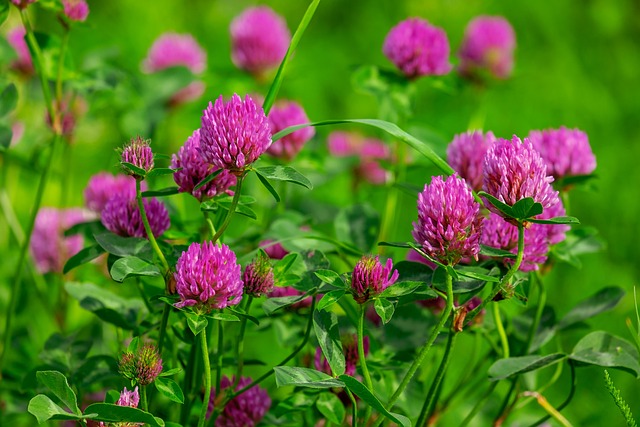Clover mites, though tiny, are potent indoor plant pests causing significant harm during warmer months. They hide in crevices, reproduce swiftly, and feed on sap, leading to stunted growth and yellowing leaves. To combat them humanely, adopt eco-friendly solutions like regular monitoring, proper air circulation, introducing natural predators (ladybugs, spider mites), maintaining optimal humidity, avoiding overwatering, using neem oil or plant-based soap insecticides, and applying essential oils. These methods not only protect plants but also foster a healthier indoor gardening environment. Regular post-treatment monitoring, optimal care conditions, and eco-friendly products ensure plant recovery and sustainable mitigation.
Protecting your indoor plants from clover mite damage is essential for maintaining a vibrant, healthy home ecosystem. This guide explores effective eco-friendly prevention strategies to keep these tiny invaders at bay. Learn about the behavioral patterns and damage signs of clover mites, discover natural remedies for infestations, and find out how to monitor and maintain your houseplants post-treatment. Embrace sustainable solutions and ensure your plants thrive without harmful chemicals.
Understanding Clover Mites: Behavior and Damage Patterns
Clover mites are tiny pests that can cause significant damage to indoor plants, despite their unassuming size. These arachnids are particularly drawn to lush greenery and tend to target houseplants, orchids, and other ornamental plants. They feed by inserting their mouthparts into plant cells, sucking out the sap, which can lead to wilting, yellowing leaves, and stunted growth. Understanding their behavior is crucial in devising effective, eco-friendly clover mite solutions.
Clover mites are most active during warmer months, often hiding in the smallest crevices of plants during cooler periods. They reproduce rapidly, making early detection key to preventing widespread damage. An eco-friendly approach to managing these pests involves regular monitoring, ensuring proper air circulation around plants, and using natural predators like ladybugs or spider mites as a biological control. Additionally, maintaining optimal humidity levels and avoiding overwatering can deter clover mites, fostering a healthier indoor gardening environment.
Eco-Friendly Prevention Strategies for Indoor Plants
Clover mites can wreak havoc on indoor plants, but there are eco-friendly prevention strategies that can help keep them at bay. One effective approach is to maintain excellent air circulation around your plants. These tiny pests thrive in warm, humid environments, so ensuring proper ventilation and avoiding excessive misting or watering can significantly deter their presence.
Using natural predators like ladybugs or lacewings is another organic solution. These beneficial insects feed on clover mites and can be introduced into your indoor space to control the population. Additionally, applying neem oil or soap-based insecticidal solutions made from plant extracts can effectively repel clover mites without causing harm to your plants or the environment.
Natural Remedies to Combat Clover Mite Infestations
Clover mites can be a nuisance for indoor plant enthusiasts, but there are several natural and eco-friendly remedies to combat these tiny invaders. One effective method is introducing beneficial insects like ladybugs or lacewings into your space. These predators feed on clover mites and other pests, helping to control their population naturally. Another simple yet powerful solution is creating an environment that discourages clover mites. Keeping plants healthy with proper watering and fertilization makes them less appealing to these pests. Additionally, using neem oil, a natural insecticidal oil derived from the neem tree, can deter clover mites and other insects without causing harm to your plants or the environment.
For a more organic approach, consider using essential oils known for their pest-repellent properties. Dilute oils like lemon, peppermint, or cedarwood in water and spray it onto your plants. These scents can disrupt the clover mites’ behavior and repel them effectively. Additionally, maintaining good air circulation around your plants and regularly cleaning surfaces to remove any webbing or eggs can prevent infestations from taking hold. Eco-friendly solutions not only protect your precious indoor plants but also contribute to a healthier and more sustainable living environment.
Monitoring and Maintaining Healthy Houseplants Post-Treatment
After treating your indoor plants for clover mite damage, regular monitoring is key to ensuring a full recovery. Keep an eye out for any new infestations or lingering symptoms. Check plants daily, examining both the upper and lower surfaces of leaves for signs of mites, webbing, or damaged areas. This proactive approach will help you catch any potential issues early on.
To maintain healthy houseplants post-treatment, provide optimal care conditions. Ensure adequate lighting, suitable humidity levels, and well-draining soil. Proper watering is crucial; avoid overwatering, as it can create a favorable environment for mites to thrive. Additionally, consider using eco-friendly clover mite solutions, such as neem oil or insecticidal soap, which are safe for both plants and the environment, offering an effective yet sustainable approach to mitigating future infestations.
Protecting your indoor plants from clover mite damage requires a multi-pronged approach. By understanding these tiny invaders and their damaging patterns, you can employ eco-friendly prevention strategies, such as regular cleaning and proper humidity control. If an infestation occurs, natural remedies like neem oil or soap solutions offer effective, non-toxic options. Continuous monitoring and maintenance after treatment ensure your houseplants remain healthy and thriving. Adopting these eco-friendly clover mites solutions not only protects your plants but also contributes to a healthier indoor environment.
